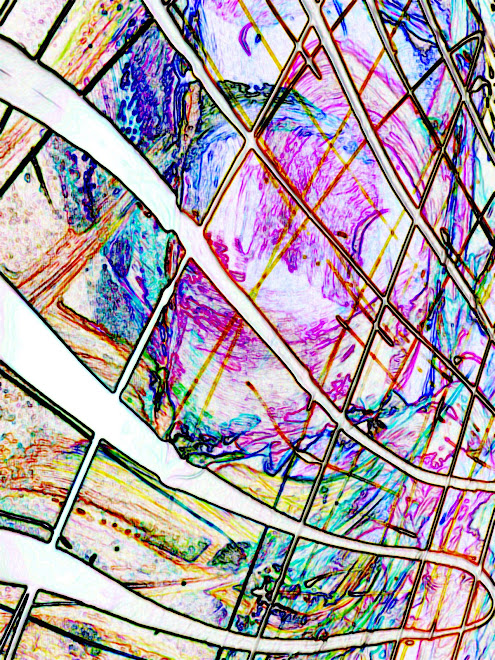What determines success? I think that the answer to this question is above and beyond an individual thing. My immediate thoughts usually come back to something along the lines of wealth/money/fortune, fame/popularity, but ultimately happiness and contentment. So where am I going with this? Given the fragmentation of cultures, the rise of hyperlocal socialization and industry, and the fall (or at least decline in market share) of many big businesses, is this changing the way we view success.
Consider the music industry for example. The popular music industry is dominated by four multinational corporations: Sony BMG; Universal; AOL Time Warner; and EMI. But over the last decade there has been a considerable rise in independent labels, sole traders and small media buyers who compete directly with the smaller companies and labels that make up the "big-four" record groups. I suppose it is still generally assumed that to crack the "big time" in the popular music industry you still have to be signed to one of these major labels, but to be a successful musician? Maybe not so.
It’s generally accepted that the biggest changes in the music industry have come from digital mp3 formatting technology and file-sharing. These technologies have revolutionized music production, distribution, and audiences. Aside from presenting (huge) challenges associated with copyright and intellectual property, digital formats have not only contributed to the growth of highly interactive music-orientated PayTV stations (such as Channel [V] and MTV Australia) but have, or should I say are, ultimately stretching the boundaries of endless “possibilities and complexities of ever-changing, collaborative creation” (Martin 2006, 323-324). Unfortunately even though these new opportunities for creation, innovation, and inspiration should be celebrated, there is still only a weak link between what can be considered as talent and the recognition and success of this (Martin 2006, 327). In Australia, state governments have begun to nurture the popular music infrastructure, particularly through recognizing ‘contemporary popular music clusters’, like the one found in the Queensland suburb of Fortitude Valley (Homan 2006, 252). Ah, ‘creative clusters’ – another buzz word of the moment! These clusters serve as a breeding ground for emerging music artists and give them an opportunity to immerse themselves in the music industry with recording studios, live music venues, and other music businesses concentrated in the one area (Homan 249-252). It is through this avenue that emerging music artists may get their foot in the door of the music industry. The increase in talent quests such as Triple J Unearthed, and reality TV programs like Australian Idol also gives emerging artists a launching pad for their music careers, but once launched you are at the mercy of the populace.
Continuing on from the revolution of digital formatting is the change in audience building and the use of technologies associated with Web 2.0. New media platforms and internet sites that support file sharing and/or encoding devices, such as MySpace, Esnips, AMIE Street, and YouTube have given emerging artists the opportunity to self promote their own music and begin to accumulate a fan base without ever signing a record deal (Graham 2007). This works well with the reverse value structure of the mass mediated industry, where things, such as music, retain more value with each use, as well as enabling artists to distribute their music on a global scale and to an endlessly diverse audience (Graham 2007; Martin 2006, 321-324; Sternberg 2006, 335). Most musicians are able to overlook the fact that they are at the mercy of various encoding devices, and face a reduction in sound quality, in light of the opportunities the internet and digital revolution brings. I think that the music industry’s concerns over viability due to the threat of digitization are not unwarranted, but they should be looked on more favourably considering the advantages, particularly for emerging artists, that these technologies bring. Supporting the local infrastructure of the popular music industry, encouraging entrepreneurial activities and spirit, and embracing and utilizing new technologies is the best way to foster the growth of emerging popular music artists and for them to elevate their own success. This of course extends beyond the music industry and goes for all new technologies and all industries across the board. Pessimism is not a healthy thing – Keynesian economics anyone? Sure we should be wary of how these new technologies are used, but to try and suppress their potential because we are scared of them is putting limits on the unknown! Maybe I’m too optimistic about humanity, but I would like to believe that the majority of people doing good out there outweighs those doing bad. Logically as long as this isn’t thrown off balance then there should be an exponential growth of good work being done, that will be able to trump anything bad that ever comes along.
REFERENCES
Graham, P. 2007, 2 September. Popular Music.
Homan, S. 2006. Popular music. In The Media and Communications in
Martin, F. 2006. New media, new audiences. In The Media and Communications in
Sternberg, J. 2006. Youth media. In The Media and Communications in




No comments:
Post a Comment